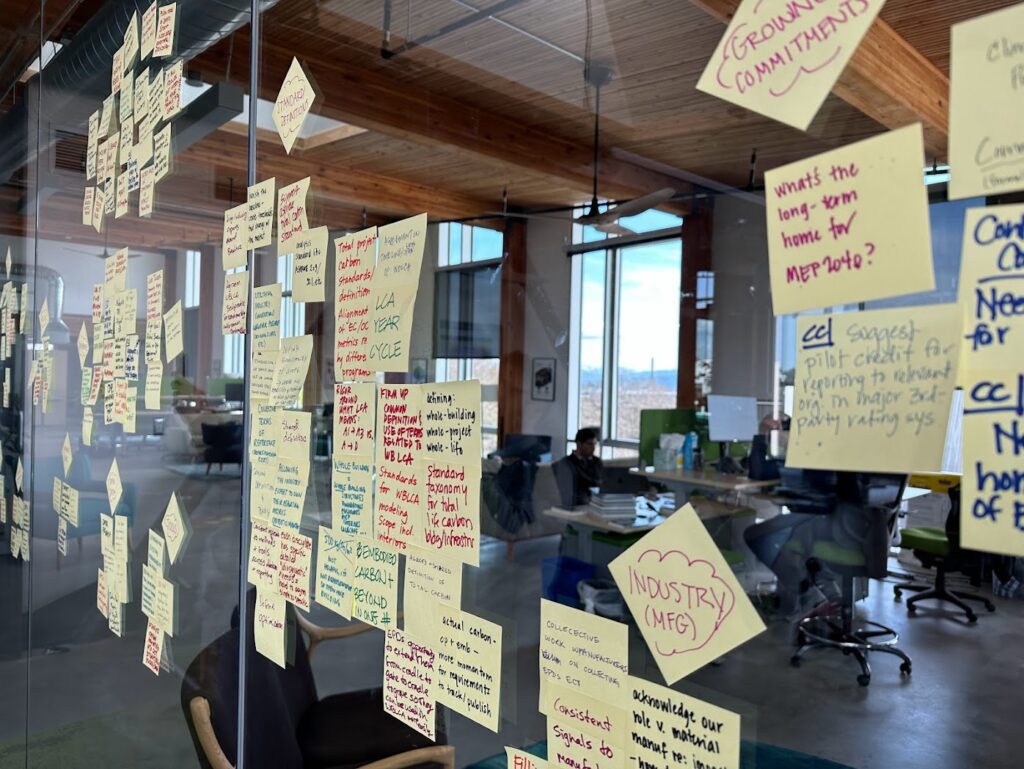Structures Congress 2023 Wrap-Up
The annual Structures Congress hosted by the Structural Engineering Institute (SEI) of the American Society of Civil Engineers (ASCE) took place this year in New Orleans, LA, from May 3 to May 6. This is the largest annual structural engineering conference in the United States and allows attendees to learn, engage, and network within the structural engineering community. The Congress serves as an opportunity to learn about the latest technical subjects and Code updates as well as the current and new initiatives being promoted by SEI to better the profession. The Congress is also where the numerous committees and subcommittees gather for face-to-face meetings the day before the Congress officially starts. It was great to engage with old and new colleagues on a full range of topics but in particular embodied carbon and how the structural engineering profession is responding.
To understand just how much focus is being paid to climate change and embodied carbon, one simply needs to evaluate the number of sessions on the subject. Here are a few statistics.
- Just under 25% of all technical sessions included mention of climate change in the topics of:
- Embodied carbon
- Resilience
- Conceptual design
- Code change
- Thermal bridging
- Over 10% of all technical sessions were focused directly on climate change and embodied carbon.
- Two out of the three keynote presentations included specific commentary on carbon and the need to consider its measurement and reduction for future climate impacts.
Several of the sessions that discussed embodied carbon also highlighted SEI’s effort in this space by promoting the SE 2050 Commitment Program (https://se2050.org/) that SEI launched in November, 2020. Cora Structural’s Founder and Principal, Michael Gryniuk, who currently serves as Chair of SE 2050, facilitated the annual face-to-face committee meeting on Wednesday, May 3 which included the following items:
- Update on current status of the Program since launch in November, 2022
- 117 Signatory Firms
- 500+ Projects in the SE 2050 Database
- Over 1,100 newsletter sign ups
- Reviewed the results of the strategic planning sessions from early 2023
- Discussed that a key item for future planning is the coordination with the SEI Prestandard for Calculation Methodology for Structural Systems in Whole-Building Life Cycle Assessments currently being developed by the Sustainability Committee
- Outlined the priority focus areas and deliverables over the next 18 months
- A broader discussion and brainstorming for the future of SE 2050
As noted there were several technical sessions that highlighted the impacts of climate change on the structural engineering profession. Of particular note was a session on the upcoming 2028 version of ASCE/SEI 7 (Minimum Design Loads and Associated Criteria for Buildings and Other Structures). The session reviewed a new section to be included (non-mandatory) that would include ‘future conditions to account for load changes due to climate change’. The new section is in the early stages of development and the content is not yet set, however, it is understood that the loads would be based on design life and dependent on risk category among other items. As one might imagine, the topic fostered a healthy debate on when an owner might want to include such design considerations, how the level of design loads would be established, how such design future loading conditions might impact present costs, and a lengthy discussion on risk mitigation and liability. And to what extent the structural engineer should or shall be involved.




